Introduction
Slovenia is a country in the extreme north of the Mediterranean area or the extreme south of central Europe, at the intersection of the Alps, the Dinarides, and the Pannonian Plain. It borders Austria to the north, Italy to the west, Hungary to the east, and Croatia to the south. It is a medium-sized European country with an area of just over 20,000 km².It is divided into seven traditional regions: Prekmurje, Styria, Carinthia, Upper Carniola, Inner Carniola, Lower Carniola, and the Littoral. Mt.Triglav (2,864 m) is Slovenia’s highest mountain and it also has a 48km coastline. Its capital Ljubljana is the economic, political, and cultural center. Other major towns include Maribor, Celje, Novo Mesto, MurskaSobota, Kranj, Koper, and NovaGorica. According to the 2011 census, the country has a population of 2,050,189[1,2].
Development of dermatology in Slovenia until the Second World War
The beginnings of organized care of patients suffering from venereal diseases in Slovenia reach back to the end of the 15th century, when the Ljubljana town hall commissioned a hospital for syphilis patients, whose numbers were increasing rapidly at that time[3].The beginnings of hospital care for patients with dermatological and venereal diseases are found at the end of the 18th centuryin the first Slovenian civil hospital in Carniola. After a renovation in 1789, the syphilis department moved to its own premises in the hospital,a department of dermatology and venereal diseases. After the syphilis epidemic in the early 19th century, the hospital enlarged the department from five to 23 beds during the 1840s. Later on the hospital already had two separate departments: one for syphilis and one for skin diseases. The first head of the department was JanezPestotnik (1871–1981), who was followed by JožefDornik (1881–1892). In 1892, its management was taken over by VinkoGregorič. The number of patients increased over the years: from 336 in 1876 to 407 in 1885 at the syphilis department, and from 230 in 1876 to 330 in 1885 at the department for skin diseases[4].At the end of the 19th century, the number of patient beds and staff available at the two departments was too small, and so the department needed to expand.
In1895,the Pavilion for Skin Diseases was built,as the department of dermatology was called at that time. It had 66 beds and suited the pathology and epidemiologic requirements for treating the extremely widespread venereal diseases of that time, especially syphilis and gonorrhea[5].The development of dermatology in Slovenia until the Second World War was primarily influenced by the Viennese and Prague dermatology schools, where the first Slovenian physicians (or physicians working in Slovenia)received specialized training in this branch of medicine[6].
The increase particularly in sexually transmitted diseases during and especially after the First World War also dictated the establishment of a dermatology and venereal department (or venereal clinic) in Maribor and Celje.
Because of the significant stigma associated with venereal diseases, the first dermatology and venereal departments usually had to deal with poor working conditions and a lack of space. The Maribor department for skin and venereal diseases began operating in 1920. Its first head was chief physician HugonRobič (1886–1937), who also founded a serology laboratory for diagnosingsyphilis, the first laboratory of this kind in Slovenia[7].The Maribor department had a regional character and admitted patients from Styria, Prekmurje, and Carinthia. It developed in line with the clinical needs of that time and became the central curative care institution; it formed the basis for outpatient care, epidemiology and clinic services, and socialmedicine in northeast Slovenia. From1937 onwards, the department was headed by chief physician Vladimir Milavec[8].In 1923, a clinic for sexual diseases opened in Celje as part of the social medicine institutions that were established under the aegis of the Ljubljana Hygienic Institute; in 1928, this clinic merged with the Celje Health Center. Until the arrival of the first dermatology specialists, work at the clinic was performed primarily by GPs or other medical specialists[9].
In 1924, the Ljubljana dermatology department was taken over by chief physician and later professor JernejDemšar, who headed it until 1945. The number of patients at the department increased rapidly between 1918 and 1940. In 1935, there were already as many as 2,413 patients admitted, which was twice the number recorded in 1912, when 1,100 patients were treated at the department. In 1936, the department had 40 beds available: 20 for men and 20 for women, which was not enough to meet its needs. Due to poverty and unhygienic conditions, there were many mange cases, and sexually transmitted diseases were also on the rise. Because the department was overcrowded, patients left the hospital in improved condition, but still not fully cured[10].In addition, the number of syphilis and gonorrhea patients also grew, as elsewhere in Europe. The main problem was the lack of space for admitting patients suffering from sexually transmitted diseases. Especially female patients (prostitutes) had to leave the hospital while still contagious so that treatment could be provided for those that needed it more[11].
During the interwar period, the clinic for skin and venereal diseases continued to operate in Ljubljana as part of the health insurance fund, but many patients were also treated at general practitioners’ private practices. Until 1941, a voluntary clinic for patients suffering from sexually transmitted diseases headed by chief physician Robič also operated in Maribor[12].
Development of dermatology in Slovenia after the Second World War
The high incidence of sexually transmitted diseases, especially gonorrhea and syphilis, was typical of the period after the Second World War. There was also a relatively high incidence of pyoderma, zoonoses, epizoonoses, and skin diseases resulting from a lack of hygiene[13].Because only two dermatology hospital departments and a few clinics for skin and venereal diseases were active at that time, epidemiologic outpatient servicesstarted gradually being organized throughout Slovenia. Yugoslavia was also among the first signatories to the World Health Organization charter, according to which it began establishing the WHO recommendations and introducing modern principles in fighting venereal diseases. In accordance with the Fighting Contagious Diseases Act, the Decree on Fighting Venereal Diseases was adopted in 1948[14],which formed the basis for setting up venereal services across all of Yugoslavia. Among the Yugoslav republics, the concept of a network of dermatology and venereal outpatient clinics was first brought to life in Slovenia, where it was also implemented the most effectively and consistently. Eighteen outpatient clinics for skin and venereal diseases (nine regional and nine local) were established to perform preventive, curative, health-education, and social-epidemiological activities for individual regions[15].The Dermatology Department in Ljubljana functioned as a central outpatient clinic in Slovenia, which coordinated methodological and organizational work[16].At a 1951 meeting of the dermatology section of the Slovenian Medical Association in Maribor, the division of operations between the Ljubljana and Maribordermatology departments was agreed upon. Ljubljana was to be in charge of research and teaching activities related to dermatology, and Maribor was to cover preventive medical and health-education areas[17].
In the early 1950s, the incidence of sexually transmitted diseases was already decreasing, but it began rising again in the second half of the 1950s and in the 1960s. This was also the trend elsewhere around the globe; in Slovenia, an increase in venereal diseases was recorded from 1955 onwards. First, the incidence of gonorrhea grew, followed by syphilis from 1960 onwards[18].
Other hospital and outpatient dermatology departments were also established. In Celje, the hospital dermatology department was founded in 1954, and from 1958 to 1962 it also included an outpatient clinic for venereal diseases. Because the department was too small to meet the demand for treatment at that time, patients were also sent to Maribor and Ljubljana. During the first years, the number of hospitalized patients was between 450 and 600, but it grew to 1,000 between 1965 and 1972. Initially it had 30 patient beds available and moved to other locations on several occasions. After moving to Novo Celje, it had 46 beds available, but when it moved into the new Celje hospital this number again fell to 32. The department only received its first proper facilities in 1991, when it moved to the newly built wing of the Celje hospital, where it was allocated 22 beds (five for children); the number of beds available today is 28[19].
After the establishment of a venereal outpatient clinic in 1952 and a clinic for skin diseases in 1955, a hospital dermatology department with 21 beds was established in Novo Mesto in 1958.Later on the number of beds increased to 36 and, after moving to the new extension of the Novo Mesto hospital, it rose to 42. The department worked closely together with the local biochemical laboratory, the Ljubljana Dermatology Department, and the dermatology outpatient clinics in Novo Mesto, Krško, Črnomelj, and Brežice[20].
The specialist dermatology outpatient services thus developed in parallel with other hospital departments; in Ljubljana, they also developed at the Outpatient Hospitaland the Railway Health Center. Minor outpatient units were dispersed throughout Slovenia (i.e., in Koper, Kranj, Jesenice, SlovenjGradec, and Nova Gorica). In Ljubljana, the dermatology department of the Ljubljana Military Hospital also played an important role; from 1964 to 1982 it was headed by chief physician StjepanBunta, and it was dissolved in 1991.
After the establishment of outpatient and inpatient services during the 1950s, Slovenian dermatology reached the central European level. Forming links played a vital part in this regard, initially with Zagreb dermatologists, and after 1960 also with other dermatology departments abroad, especially in Austria, Italy, Switzerland, Germany, and Poland[21].
During the 1960s, patient pathology began to change. There were fewer cases of cutaneous tuberculosis and syphilis, and other skin diseases began to dominate. There were increasing cases of various types of dermatitis, varicose syndrome, psoriasis, and dermatomycoses. Laboratory activity was also developing well, making possible more accurate diagnosis of allergies and other skin diseases.
The 1970s saw the introduction of radiotherapy in treating psoriasis and some other skin diseases. With this, psoriasis patients in particular were given the opportunity to control their disease to a greater extent. In general, the treatment of skin diseases improved significantly with the introduction of various antibiotics, corticosteroids, retinoids, cytostatics, and other drugs[22].
Like other branches of medicine, dermatology too experienced rapid progress in the second half of the 20th century, especially with regard to the mechanisms of diseases, their detection, and treatment; this naturally demanded substantial funding. In addition, dermatology became increasingly more developed and subspecialized (pediatric dermatology, allergology, phlebology, dermatologic oncology, dermatologic surgery, and dermatologic histopathology). In Slovenia high-quality services were developed and provided in dermatologic oncology (Betteto), dermatologic surgery (Bunta), specialist laboratory diagnostics (Kansky), comprehensive treatment of venereal diseases (Fettich), pediatric dermatology (Kavčič), allergic and occupational dermatoses(Lunder), and dermatomycoses (Lunder).During the 1990s, a computer-aided dermoscopic method for diagnosing melanoma (Bartenjev), laser treatment (Bartenjev), principles of modern treatment of sexually transmitted diseases (Potočnik), and so on were introduced[23].
This development resulted in changes in the organization of labor and the type of services provided in dermatology. The number of hospital beds decreased and the size of the departments became smaller, whereas the quality of outpatient checkups, lab tests, and other diagnostic procedures improved. Anoutpatient hospital was established, and work was improved and made more economical with the use of computers and modern technology[24].Thus the doctrine of treating patients suffering from skin diseases changed over time. Outpatient treatment predominates today, and only the most difficult cases are treated with hospitalization. Allergic diseases and conditions resulting from vascular diseases predominate[25].
Development of the Ljubljana dermatology department
In 1945, the hospital department for skin and venereal diseases was converted into the Dermatology Department, and a department of dermatology was also established as part of the full medical school. During the 1950s, Ljubljana dermatologists worked at their home institutions as well as at the Ljubljana Outpatient Hospital, at three specialist outpatient clinics in health centers outside Ljubljana, and at two venereal outpatient clinics in Ljubljana. In addition, they performed routine medical checkups of workers at factories, where occupational skin diseases were typical. The Dermatology Department cooperated with other departments in specialist consultations. With the support of some outside doctors, the physicians at the department held the Third Congress of Yugoslav Dermatologistsin 1957[26] (Figure 1).
The increasing activity at the department resulted in an increasing need to renovate or expand the premises. The rapid development of the discipline, new treatment methods, and modern views on the etiology and pathogenesis of venereal and skin diseases showed that the department did not have enough functional space and especially not enough laboratories. Therefore, from 1950 to 1960 the building was remodeled to provide vital conditions for research. In addition, the department’s capacities increased significantly[27].In 1946, it had 100 beds available, it admitted 2,192 patients, and the average length of hospital stay was 7 days; in 1959, however, the department had 156 beds, it admitted 2,101 patients, and the average length of hospital stay was 23 days[28].
The increasing number of patients during the 1970s led to a poorer standard of the premises, especially because there were not sufficient funds for further renovations. The department primarily admitted patients from the Ljubljana region, the Littoral, and Upper Carniola. However, as the central national institution it also accepted a considerable number of seriously ill patients from other parts of Slovenia and even other countries. The number of beds would have been sufficient if they had been able to refuse patients that could have been treated at home provided that home care had been better organized. The wards were thus constantly full.
The Dermatology Department was not only the central institution for this area in Slovenia, but was also important in the wider Yugoslav context. From 1975 to 1979, Ljubljana was the seat of the Yugoslav Dermatology Association, and from 1974 to 1983 also the seat of the editorial board of the journal ActaDermatovenerologicaIugoslavica, which for many years was edited by AleksejKansky[29].
The number of hospital beds at the department remained the same during the 1980s: 156, of which eight were reserved for intensive care. The department had 119 employees, of whom 77 were members of the medical staff (17 specialist physicians). It consisted of five hospital wards: four adult and one pediatric. The department’s clinics also provided important healthcare services. The department included four specialist dermatology clinics, a specialist dermatology clinic with an outpatient unit for skin and venereal diseases, a pediatric clinic, two phlebology clinics, a clinic for venous leg ulcers, a clinic for occupational skin diseases, a clinic for fungal skin diseases, and a clinic for radiotherapy of skin diseases.In addition, the department also included remote dermatology clinics and a clinic for varicose veins on Njegoš Street (the former Outpatient Hospital). There an outpatient clinic for skin and venereal diseasesof the Ljubljana Institute of Public Health also operated in close cooperation with the department’s clinics[30].
Modern skin disease diagnostics also demanded the establishment of laboratories, which are a major precondition for any serious research work. Thus specialist laboratories were gradually built. The biochemical and serodiagnostic laboratory was converted into an immunobiochemical laboratory, which, in addition to certain routine tests, primarily ran special biochemical tests specific for this field and specific immunology tests. The allergy laboratory performs epicutaneoustesting on patients with contact eczema, which is also important for differential diagnoses of certain occupational dermatoses. The histology laboratory carries out histological skin excision analyses, which are indispensable for diagnosing many dermatoses. The mycology laboratory detects and differentiatesdermatophytes and yeasts in patients with dermatomycoses. The bacteriology laboratory is used for rapid diagnosis and differentiation of pathogenic microbes in patients with skin diseases, and gonococci and treponema in patients with venereal diseases. All of the laboratories have focused their activities on the specific needs of the discipline, which is strongly connected with research[31].
In the past the department also included a unit for the specialist functional activity of hospitalized patients and outpatients, a slide collection, and a library.
It also had its own photo lab for black-and-white photos and color slides for its photographic documentation. In 1970, the photo library included over 2,000 slides of various dermatoses. Today the Dermatology Department keeps a digital dermatosis archive.
Around 2000, the department experienced a reduction in its professional activities and bed capacities. It was forced to reduce the number of beds from the original 146 to 32 in just a few years. This resulted in outpatient treatment of an increasingly greater number of patients with more serious conditions. The reduction in hospital services also affected tertiary activities. Two phlebology wards and one men’s hospital ward were closed down in addition to some laboratories (the immunohistology, bacteriology, and serology ones), and certain subspecialist activities were also canceled[32].
Today the Dermatology Clinic at the Ljubljana University Medical Center is the central national health institute for inpatient and outpatient treatment of individuals with skin and venereal diseases. It mostly treats patients with skin diseases from central Slovenia, but it also admits patients from other Slovenian regions. It is a tertiary healthcare institution that treats the most difficult cases of skin diseases. Its activities include hospital and outpatient treatment, laboratory testing, diagnosis, and physiotherapy. Its basic tasks also include teaching and research work, and it serves as the main learning centerfor the Ljubljana Medical School and the seat of its department of dermatology. The Dermatology Department has 32 (before 4 years 50 beds) beds available in two hospital wards—an adult ward with 22(40 beds before 4 years) beds and a pediatric ward with 10 beds—and seven beds as part of the outpatient hospital unit. Medical activity is also performed at specialist and subspecialist clinics, in laboratories, and in the physiotherapy unit. All of the activities take place in the department’s building. Approximately 1,900 patients are admitted to the hospital wards a year, and 50,000 are examined at the outpatient clinics. The average length of hospital stay in 2010 was six days[33].
In addition to the general dermatology clinics, the outpatient clinicsalso include the following: a phlebologyclinic with outpatient units for venous leg ulcers and patients with varicose veins, duplex ultrasound, standard sclerosant and foam sclerotherapy, surgical endovenous laser, radiofrequency, and foam treatment, a clinic for sexually transmitted infections, a dermatologic oncology clinic with a subspecialist melanoma outpatient unit, a dermatologic surgery clinic, subspecialist pediatric clinics, a mycology clinic, a clinic for patients on biologics and other systemic drugs, clinics for allergic diseases, clinics for atopic dermatitis and chronic urticaria patients, and a laser treatment clinic. The department has three laboratories: mycology, allergy, and dermatopathohistology. The physiotherapy unit provides various types of phototherapy, physiotherapy, and transcutaneous neural blocks in patients with herpes infections. Lymphologystarted being introduced at the department as early as 2002(Ručigaj andKecelj)[34],and currently the department is the only one in Slovenia that has a clinic and outpatient hospital unit for patients with lymphedema. In 2004, the development of phlebology was significantly accelerated through the introduction of various diagnostic and therapy methods (Ručigaj andKecelj)[35].In 2010, the department compiled a Register of Malignant Melanoma Patients in cooperation with the Ljubljana Institute of Oncology, the Medical School Institute of Pathology, and the Department ofPlastic Surgery; the register started being used throughout Slovenia in 2011[36,37].In addition, a Register of Psoriasis Patients on Biologicscovering all of Slovenia was created in cooperation with the Association of Slovenian Dermatologists.
Teaching and research
The Department of Dermatology has been offering classes to medical and stomatology students from the very start in the form of lectures and lab classes, in which students can first learn introductory material and the basics of diagnostics, and acquire necessary theoretical knowledge about the etiology and pathogenesis of skin and venereal diseases, followed by practical training with patients.
In1970, the department had two instructors, five assistant instructors, and one nurse, and in 2010 it had one instructor and six assistant instructors. External associates from the Ljubljana Dermatology Department also teach classes at the department. The faculty also teach at the University of Ljubljana’s Biotechnical Faculty, Faculty of Pharmacy, and Faculty of Health Sciences, the Jesenice Faculty of Health Sciences, and the University of Maribor’s Medical School.At the undergraduate level, the department offers a total of 60 hours of lectures and lab classes a year for medical students and 30 hours of lectures and lab classes for stomatology students. Lectures in individual subspecialist dermatology areas are also provided as part of elective classes[38,39].
Research at the Ljubljana Dermatology Department increased significantly during the 1970s. The staff from the Medical School and some specialist physicians have conducted several studies, published many articles in Slovenian and international journals, attended all major dermatology conferences in Slovenia and abroad, made good use of the modest opportunities for further training at other dermatology departments, and earned three PhDs.
Important research has been conducted in several areas: a minor part of research dealt with case studies and a major part focused on experimental work. Dermatology offers a wide range of research and work opportunities. The needs to expand the area of activity demand an increased number of qualified medical staff not only at the department, but also in other health centers across Slovenia[40].In the 21st century, the staff are introducing and developing new diagnostic and therapy methods or transferring them from abroad. They have been especially active in dermatologic oncology, dermatologic mycology and parasitology, allergology, phlebology, dermatopathohistology, and lymphology. Together with the researchers at the University of Ljubljana’s Faculty of Mechanical Engineering, they study the use of laser measurement systems for analyzing skin lesions, and conduct genetic research together with researchers at the Institute of Oncology and the GolnikUniversity Clinic for Respiratory Diseases and Allergy[41].
Heads of the Ljubljana University Medical Center’s Dermatology Department
- JernejDemšar (1924–1948)
- JožeJakša (1948–1954)
- FranjoKogoj(1954–1964)
- JanezFettich(1964–1987)
- TomažLunder(2002–2009)
- TanjaPlaninšekRučigaj(2009–)
Heads of the Ljubljana Medical School’s Department of Dermatology
- JernejDemšar(1924–1948)
- JožeJakša (1948–1954)
- FranjoKogoj (1954–1964)
- JanezFettich (1964–1987)
- MajdaLunder (1987–1994)
- Milena Kocijančič (1994–1995)
- Igor Bartenjev (2001–2006)
- TomažLunder (1996–2001; acting head: 2006–2010)
- MatejaDolencVoljč (2010–).
Notable persons
VinkoGregorič (1857–1933), dermatologist, pioneer of the field in Slovenia
He graduated from the Medical School in Vienna in 1881and also completed his residency in Vienna. From 1881 to1886, he worked at the Ljubljana Provincial Hospital and in 1887 he was appointed a physician of the regional health insurance fund responsible for Ljubljana and its surroundings. From 1892to 1924 he was the chief physician at the Ljubljana dermatology department. First and foremost, he was a good organizer of the medical profession, but also an important person in Ljubljana business life; he was made an honorary citizen of Ljubljana. In 1923, Gregoričfounded the Medical Chamber of Slovenia and was its first chair[42] (Figure 2).
JernejDemšar(1875–1961), dermatologist, first dermatology instructor
He graduated from the Medical School in Vienna in 1901, and completed his residency in dermatology. After this, he worked as a GP in Ljubljana for 20 years, and 1 year as a military doctor in Belgrade. In 1924, he became head of the dermatology department at the Ljubljana hospital. After the Second World War, he was appointed a full-time professor at the department of dermatology in Ljubljana, where he delivered lectures on basic skin and venereal diseases. He was an extremely popular professor and an extremely progressive chief physician because he wanted to elevate his department to a more modern professional level and furnish it with everything that was already available in dermatology at that time. He also published a series of general-interest research articles and participated in a campaign against venereal diseases[43] (Figure 3).
FranjoKogoj (1894–1983), dermatologist, outstanding researcher
He studied dermatology as a whole and also touched on its marginal disciplines. He gained international prominence by studying the pathohistology of the skin (Kogoj’s spongiform pustule is named after him), eczema, and allergic skin diseases, and drafting plans for syphilis treatment and national pathology. He helped Yugoslav dermatology reach a European level, and his dynamic and functional conception of skin diseases influenced many students, especially in Croatia and Slovenia. He studied medicine in Graz and Prague, where he graduated in 1920 and then also completed his residency. He received further training in Brno, Wrocław, Strasbourg, and Paris. In 1926, he moved to Zagreb, where he was the head of the Department of Skin and Venereal Diseases, and the head of the Zagreb Medical School’s Department of Dermatology. He worked as a full professor from 1932 to 1965. From 1955 to 1964, he was the technical director of the Ljubljana Dermatology Department, and from 1967 to 1974 he was the director of the Zagreb Institute for Clinical Medical Research. He was a full member and the deputy chair of the Yugoslav Academy of Sciences and Arts, and a corresponding member of the Slovenian, Serbian, and Bosnian academies of sciences and arts. He was also a corresponding member of the Austrian Research Association, the German National Academy of Sciences (the Leopoldina), and the Swiss Academy of Medical Sciences. He was an honorary or corresponding member of 24 dermatology research associations around the globe and an honorary member of the Slovenian Medical Association. He held honorary doctorates from the universities of Ljubljana (1961), Graz (1962), and Zagreb (1968), and from the Military Medical Academy in Belgrade (1970). In 1966, the People’s Republic of Croatia presented him with an award for lifetime achievement, and he also received the Anti-Fascist Council for the National Liberation of Yugoslavia (AVNOJ) award that same year. He published over 230 discussion and research articles, volumes, and textbooks. His works were published in prominent international journals,volumes, and textbooks[44,45] (Figure 4).
BIBLIOGRAPHY: Dermatovenerološkapropedeutika(Introduction to dermatology). Zagreb, 1947; Problematika eczema (Issues of eczema).Zagreb, 1947; Terapijasifilisa (Syphilis therapy).Zagreb, 1949; Spolnebolesti (Venereal diseases).Zagreb, 1966; Bolestikože I-II (Skin diseases I–II). Zagreb, 1970–71.
JanezFettich(1921–2004), dermatologist
JanezFettichgraduated from the Ljubljana Medical School in 1948 and passed his board exam in 1953. He received further training in Zagreb, Poland, and Switzerland. From 1949 onwards, he worked at the Ljubljana Dermatology Department. From 1970 onwards, Fettichwas a full professor at the Ljubljana Medical School and its dean from 1967 to 1969. From 1973 to 1983, he was the editor-in-chief of the journal ActaDermatovenerologicaIugoslavica, and the president of the Association of Yugoslav Dermatologists from 1975 to 1979. In 1987he became an honorary member of the International League of Dermatological Societies, and later that year a full member. In 1979, he was appointed a full member of the Slovenian Academy of Sciences and Arts.
He studied experimental eczema sensitization in animals, the pathogenesis of allergic contact eczema in people, and occupational skin diseases. He also explored some rarer skin diseases, allergic rashes as reactions to drugs, the pathogenesis of acne, and the classification of malignant skin tumors. He studied the epidemic of venereal diseases in Slovenia and the related socio-medical aspect of sexually transmitted diseases for decades. He published over 100 research and discussion articles, and co-authored the book Mala dermatovenerologija (Pocket Dermatology; 1974, 1977) [46]expanded with an atlas of skin and venereal diseases; also published in Serbo-Croatian both times)[47,34].
In2002, Kanskyet al. published the book Kožne in spolnebolezni (Skin and Venereal Diseases), which was revised in 2009 (edited byAlekseyKanskyand JovanMiljković).
Aleksey Kansky (1925-2015), dermatologist
He passed his board exam in dermatovenereologyfrom the Ljubljana Medical School in 1961 and PhD degree in 1966. He studied clinical chemistry and being awarded a Humboldt scholarship (1965-1967) to work at Dermatology Department at the universities of Mainz and Frankfurt. He was a senior Fulbright Scholar in 1970-1971. He has working at Dermatology Department in New York and learning fromprofessor A. B. Ackerman in 1978.From 1978 was a full professor at the Ljubljana Medical School. From that year to 1990 he was recruited to Professor and Chairman of the Department of Dermatology at the Zagreb University medical School too. From 1991 he was Research Consultant in Dermatovenerological Clinic Ljubljana. He was Editor-in-chief of ActaDermIug from 1987 to 1991. From 1992 he was 15 years Editor-in-chief of ActadermatovenerologicaAlpina, PannonicaetAdriatica – indexet in Index Pubmed as ActaDermatovenerol Alp PanonicaAdriat).He is author or co-author in over of 220 research and discussion articles. He studied experimental eczema sensitization in animals, the pathogenesis of allergic contact eczema in people, and occupational skin diseases. He also explored Hereditary Disorder of Keratinization in Croatia and Protoporphyriae in Slovenia[48].
The Association of Slovenian Dermatologists
In 1978, the Dermatology Section was established as part of the Slovenian Medical Association, which published the journal ActaDermatovenerologicaIugoslavicafrom 1974 to 1991. In 1992, this journal was succeeded by ActaDermatovenerologicaAlpina, PanonicaetAdriatica.In 1998 the section was converted into the Association of Slovenian Dermatologists, which was chaired by the following individuals:
Milena Kristan (1998–2002)
Igor Bartenjev(2002–2006)
TanjaPlaninšekRučigaj(2006–2014)
Aleksandra Dugonik (2014–)
Over the last ten years, the Slovenian Dermatology Association held at least three to fiveconferences and various seminars for physicians with various specialties and nurses in collaborationwith the Ljubljana Dermatology Department and the Maribor DermatologyDepartment. The associationcurrently has 110 members. This year it startedpublishing Mojakoža (My Skin), a new magazine for the general publicassociationcollaborates with other dermatologysocietie in theregion[49].
PHOTOILLUSTRATIONS
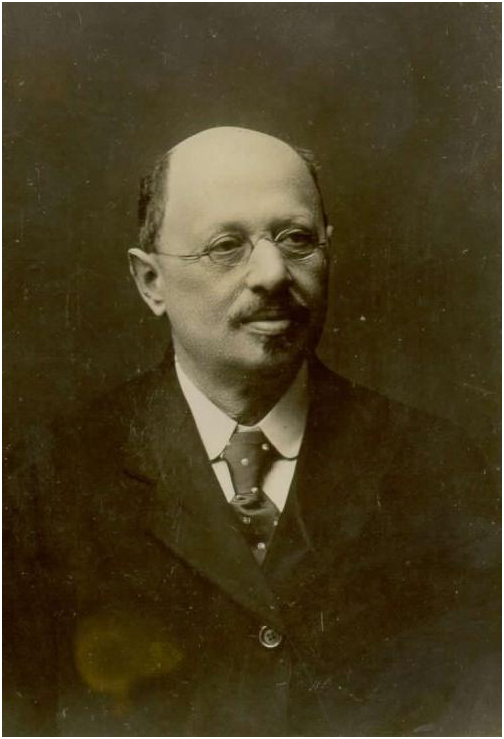
Figure 2. Vinko Gregorič (1857–1933), dermatologist, pioneer of the field in Slovenia
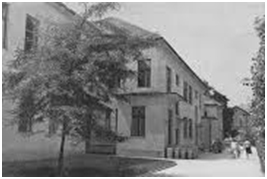
Figure 1. Dermatovenerological Clinic Ljubljana
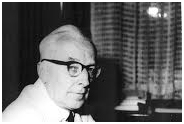
Figure 4. FranjoKogoj (1894–1983), dermatologist, outstanding researcher
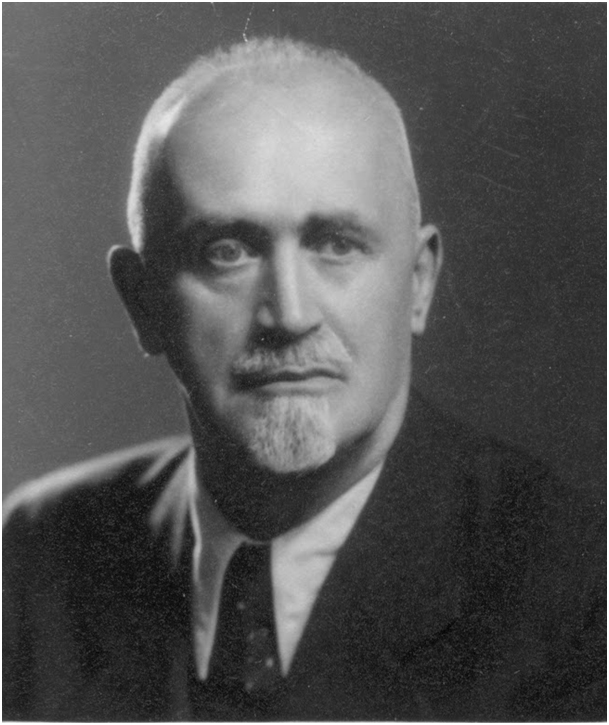
Figure 3. JernejDemšar (1875–1961), dermatologist, first dermatology instructor
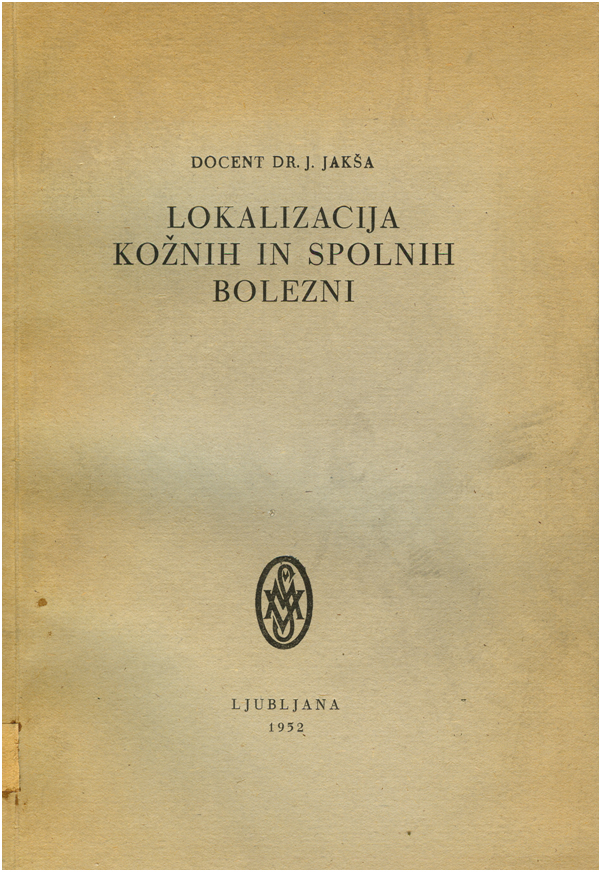
2021 Copyright OAT. All rights reserv
Figure 6. The first textbook on dermatology in Slovene by Slovenian author.
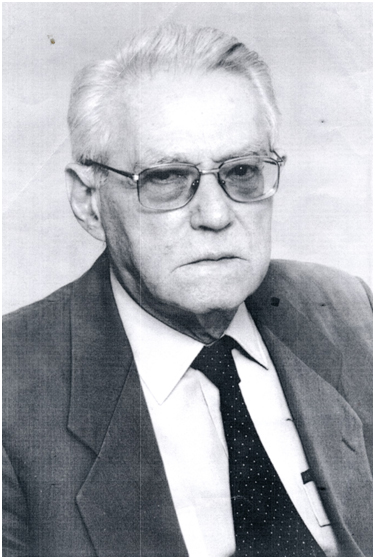
Figure 5. JožeJakša (1948–1954), Heads of the Ljubljana Medical School’s Department of Dermatology
References
- Statistical Office of the Republic of Slovenia: Prebivalstvo, Slovenija.
- http://www.slovenia.info/si/O-Sloveniji.htm?o_sloveniji=0&lng=1
- Rijavec L. Ljubljanskebolnišnice 1786–1960. Ljubljana, 1960: 18.
- Rijavec L. Ljubljanskebolnišnice 1786–1960. Ljubljana, 1960: 34.
- Demšar I. Dermatološkioddelek. ZdravVestn. 1936;8(1):30.
- Fettich J. Dermatološkaklinika v Ljubljani. Med Razgl. 1972;11:260–3.
- Pertl E. 40 let mariborskegaoddelkazakožne in spolnebolezni. ZdravVestn. 1960;29(6):170.
- Fettich J. Dermatovenerologija. In: EnciklopedijaSlovenije, vol. 2. Ljubljana: Mladinskaknjiga; 1988; p. 237–8.
- Benedičič A. DermatovenerološkioddelekSplošnebolnišniceCelje 1954–2009. Monitor: glasiloSplošnebolnišniceCelje 2009;1:6.
- Demšar I. Dermatološkioddelek. ZdravVestn. 1936;8(1):30.
- Milavec, Bregant. Luesnarašča! ZdravVestn. 1934;6(11):604–7.
- Pertl E. 40 let mariborskegaoddelkazakožne in spolnebolezni. ZdravVestn. 1960;29(6):170.
- Pertl E. 40 let mariborskegaoddelkazakožne in spolnebolezni. ZdravVestn. 1960;29(6):170–3.
- Official Gazette of the SFRY no. 1948/99.
- Bunta S, Fettich J. Organizacijaantiveneričneslužbe v SR Sloveniji. ZdravVestn. 1972;41(9):367–9.
- Bunta S, Fettich J. Organizacijaantiveneričneslužbe v SR Sloveniji. ZdravVestn. 1972;41(9):367–9.
- Pertl E. 40 let mariborskegaoddelkazakožne in spolnebolezni. ZdravVestn. 1960;29(6):170–3.
- Fettich J, Bunta S. Epidemiologija in gibanjespolnihbolezni v Sloveniji. ZdravVestn. 1972;41(9):363–6.
- Cvelfar B et al. SplošnabolnišnicaCelje: 120 let. Celje: Splošnabolnišnica; 2007; p. 260–3.
- Gošnik T. Prvihsto let novomeškebolnišnice. Novo Mesto: Dolenjskazaložba; 1955; p. 277–8.
- Fettich J. Dermatovenerologija. In: EnciklopedijaSlovenije, vol. 2. Ljubljana: Mladinskaknjiga; 1988; p. 237.
- Prelog I. Oddelekzakožne in spolnebolezni. In: Toplak C (ed.). Splošnabolnišnica Maribor 1799–1999. Maribor: SB Maribor; 2001; p. 204–5.
- Arzenšek J. Slovenskadermatovenerologija, kakšna je tvojaprihodnost? Mar nimašperspektive?! ZdravVestn. 2004;73(9):696–7.
- Penko M. Našadermatovenerologijaskušaujetikorak s časom. ZdravVestn. 1999;68 (Suppl. 2):II-1.
- Cvelfar B et al. SplošnabolnišnicaCelje: 120 let. Celje: Splošnabolnišnica; 2007; p. 262.
- Fettich J. Dermatološkaklinika v Ljubljani. Med Razgl. 1972;11:260–3.
- Fettich J. Dermatološkaklinika v Ljubljani. Med Razgl. 1972;11:261.
- Rijavec L. Ljubljanskebolnišnice 1786–1960. Ljubljana; 1960; p. 76–83.
- Fettich J. Dermatološkaklinika v Ljubljani. Med Razgl. 1972;11:260–3.
- TOZD Univerzitetnadermatološkaklinika Ljubljana. In: Poročilo o delu v letu 1985. Ljubljana: UKC; 1986; p. 13–4.
- Fettich J. Dermatološkaklinika v Ljubljani. Med Razgl. 1972;11:261.
- DolencVoljč M, et al. Slovenskadermatovenerologijaobprehodu v Evropskounijo. ZdravVestn. 2003;72:461.
- Dermatovenerološkaklinika. Glasilo UKC Ljubljana. 2010;September:43.
- PlaninsekRucigaj T., TlakerZunter V. Lymphoedema treatment in Slovenia. The Eur J of Lymphology. 23 (66) 2012: 16.
- Kecelj N., PlaninšekRučigaj T. Lunder T. Prvaflebološkašola je zanami. Isis (Ljubl.), 2004, let. 13, št. 4, str. 140.
- Dermatovenerološkaklinika. V: Strokovnoporočilo 2010. Ljubljana: UKC Ljubljana, 2011: 140–1.
- PlaninšekRučigaj T, Vreček M. Dermatovenerološkaklinika. V: Strokovnoporočilo 2013. Ljubljana: UKC Ljubljana, 2014: 95–6.
- Fettich J. Dermatološkaklinika v Ljubljani. Med Razgl 1972; 11: 262.
- Lunder T. Katedrazadermatovenerologijo. V: 90 let MedicinskefakulteteUniverze v Ljubljani. Ljubljana: Medicinskafakulteta, 2009: 165–7.
- Fettich J. Dermatološkaklinika v Ljubljani. Med Razgl 1972; 11: 263.
- Lunder T. Katedrazadermatovenerologijo. V: 90 let MedicinskefakulteteUniverze v Ljubljani. Ljubljana: Medicinskafakulteta, 2009: 167.
- Pertl E, Borisov P. Gregorič, Vinko. V: EnciklopedijaSlovenije, zv. 3. Ljubljana: Mladinskaknjiga, 1989: 384–5.
- ZupaničSlavec Z, Potočnik M (2011) PrviprofesordermatovenerologijenapopolniMedicinskifakultetiJernejDemšar (1875-1961). Isis 20: 45-47.
- Fettich J. Kogoj, Franjo. V: EnciklopedijaSlovenije, zv. 5. Ljubljana: Mladinskaknjiga, 1991: 187–8.
- Borisov P. Jeuniker, Anton. V: EnciklopedijaSlovenije, zv. 4. Ljubljana: Mladinskaknjiga, 1990: 300.
- Pintar L. Fettich, Janez. V: EnciklopedijaSlovenije, zv. 3. Ljubljana: Mladinskaknjiga, 1989: 99.
- Pintar L. Fettich, Janez. In: EnciklopedijaSlovenije, vol. 3. Ljubljana: Mladinskaknjiga; 1989; p. 99.
- Schwartz RA, Godić A. Professor AleksejKansky. In: ActaDermatoven APA Vol 14, 2005, No 4; p.: 172-3.
- MojaKoža,.Znanjedermatovenerologov, vrednozaupanja. Združenjeslovenskihdermatovenerologov. Ed: Luft S. Vol 1, 2015.





 2021 Copyright OAT. All rights reserv
2021 Copyright OAT. All rights reserv
